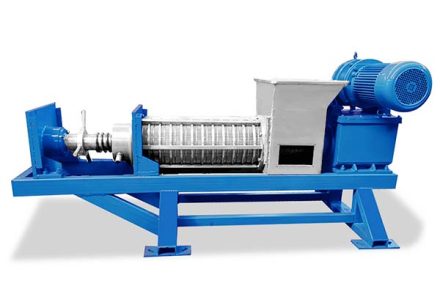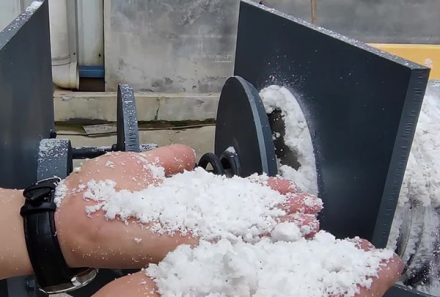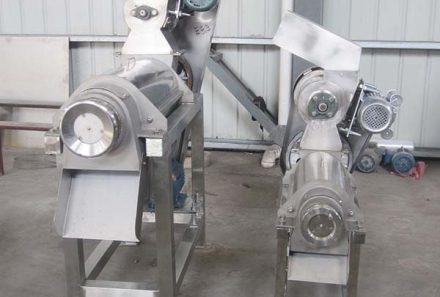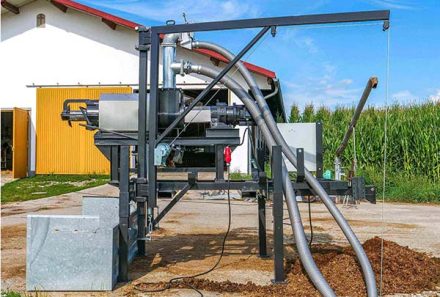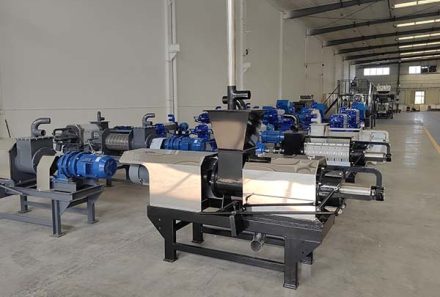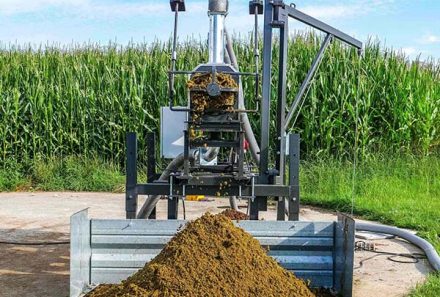Entwässerungsschneckenpresse Design
A dewatering screw press is a device used to separate water from sludge or other materials by using a screw mechanism. It is commonly used in wastewater treatment plants, paper pulp industry, food processing industry, and agricultural applications. The design of a dewatering screw press typically involves several key components, including a frame, feeding system, dewatering system (screw, screen), discharging system, casing, motor, and control cabinet. Below are more details for your reference.
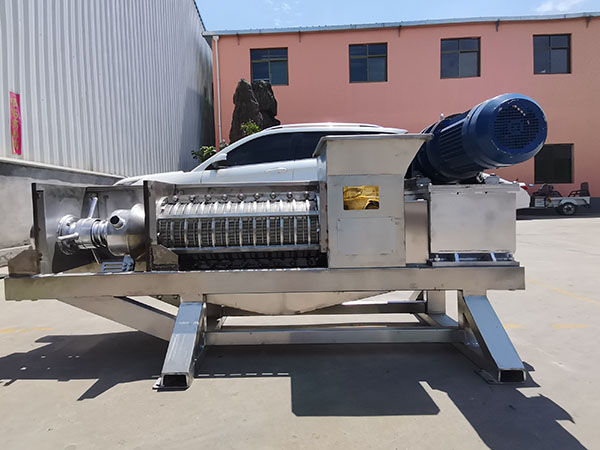
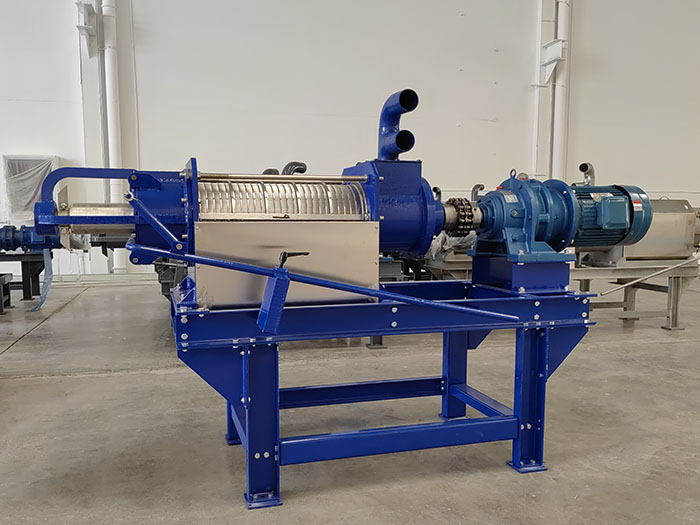
1. Screw Configuration
The screw is the central component of the Entwässerungsschneckenpresse. It typically consists of a cylindrical shaft with blades wrapped around it. The pitch, diameter, and screw structures can be optimized to achieve the desired dewatering efficiency.
Single Screw Press: A single screw press is a type of pressing machine that utilizes a single screw and a rotating shaft to extract juice or separate liquids from materials. This configuration is suitable for materials with relatively high fiber content, for example, bagasse, wood pulp, straw, corn residue, kitchen waste, etc.
Double Screw Press: A twin screw press is a type of pressing machine that utilizes two parallel screws rotating in opposite directions. This structure is typically used for handling materials with certain fiber content, such as grape residue, distiller’s grains, Chinese medicine residue, ginger, sea buckthorn fruit, mulberry, tea residue, etc.
Tapered Screw Press: The tapered screw press has a variable diameter along its length, gradually increasing or decreasing. This design enhances the compression of materials during the dewatering process, resulting in improved efficiency. By adjusting the rate of diameter and length variations, different dewatering requirements can be achieved.
Screw Blade Structure
The blade is the core component of the screw press dewatering machine, which impacts the equipment’s performance. Tianzhong Machienry adopts a three-dimensional design, that is, the blade’s cross-section is trapezoidal or semi-circular. This design enhances dewatering efficiency, minimizing solid particle retention during the process.
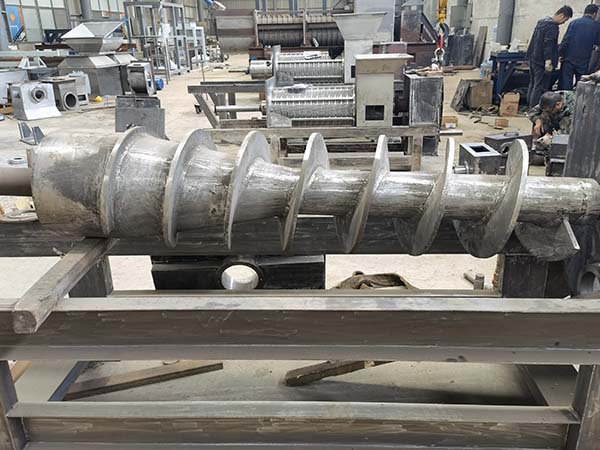
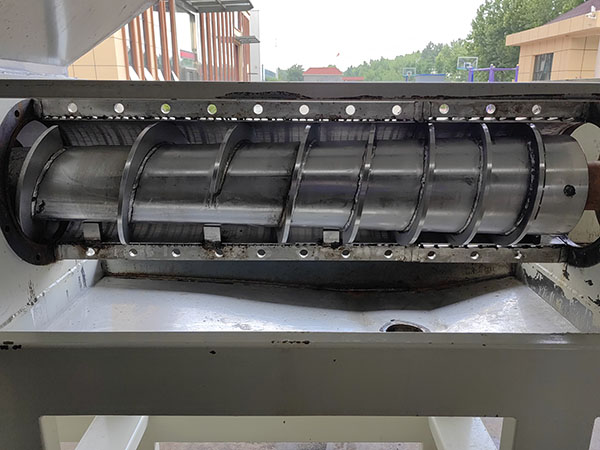
2. Cylindrical Screen
The cylindrical screen encloses the screw and allows the liquid to pass through while retaining the solid material. It is designed with small openings that prevent the solid particles from passing through. At Tianzhong Machinery, we provide a range of opening sizes from 0.3 to 2mm. The selection of the suitable opening size depends on the specific characteristics of the materials being processed. Our experienced team will assist in determining the optimal screen opening size to ensure efficient dewatering and Fest-Flüssig-Trennung.
3. Material Selection
The selection of materials for the screw and other components should consider the nature of the material being dewatered. The screen and screw of our machine are made of stainless steel due to its durability and resistance to corrosion. Moreover, we offer the option to upgrade the entire machine to stainless steel construction, catering to specific requirements and preferences.
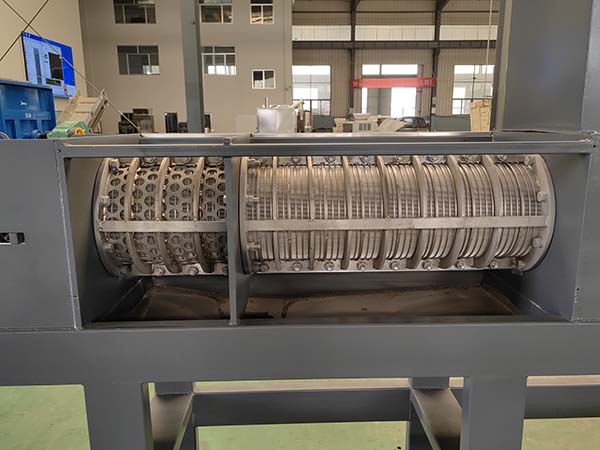

4. Inlet and Outlet Design
The design of the inlet and outlet ports is to ensure proper feeding and discharge of the dewatered materials and water or juice. Tianzhong Machinery offers different feeding systems according to different material characteristics. These systems include pipelines for materials with high water content and hoppers for materials with high solid content. In addition, for larger scale projects or automated systems, you can use a conveyor and trash can lifter to greatly enhance efficiency and convenience. To enhance the dewatering process, you can also employ a shredder to cut the materials into smaller pieces.
5. Solids Discharge Mechanism
The discharge system for dewatered solids include adjustable paddles, cone-shaped discharge sections, or other methods to ensure smooth and continuous solids removal.
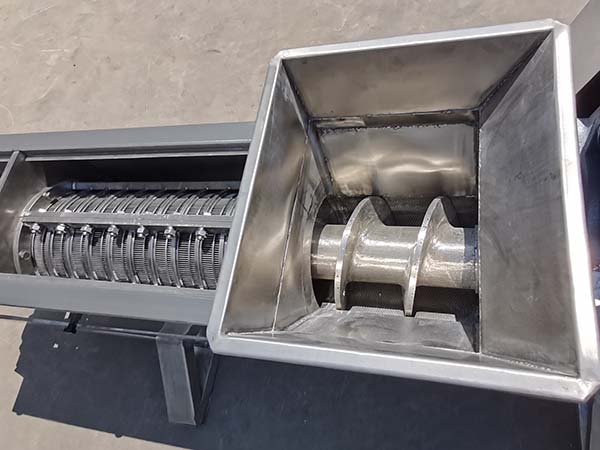
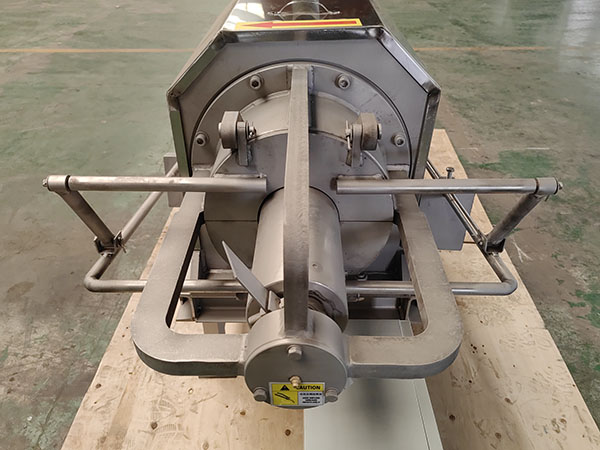
6. Speed and Torque
The rotational speed and torque of the screw are important design parameters. The speed should be optimized to achieve effective dewatering while avoiding excessive shear or degradation of the material. The torque requirements depend on the material being processed and the dewatering capacity desired.
7. Control System
The screw press machine is equipped with a user-friendly control cabinet. This design includes monitoring and adjusting parameters such as speed, torque, and pressure to maximize efficiency and minimize energy consumption.
8. Drive System
The drive system consists of an electric motor, gear reducer, and other components that provide power to rotate the screw conveyor. The speed and torque of the drive system can be adjusted to optimize the dewatering process. The motor we use is from the leading manufacturers in China and you can also choose famous brands, such as Siemens, Mitsubishi.
9. Casing
The casing serves as a protective enclosure around the screen to prevent liquid splashing. Our casing is made of carbon steel or stainless steel. It is easy to install and dismount, facilitating easier maintenance or cleaning of the screen.
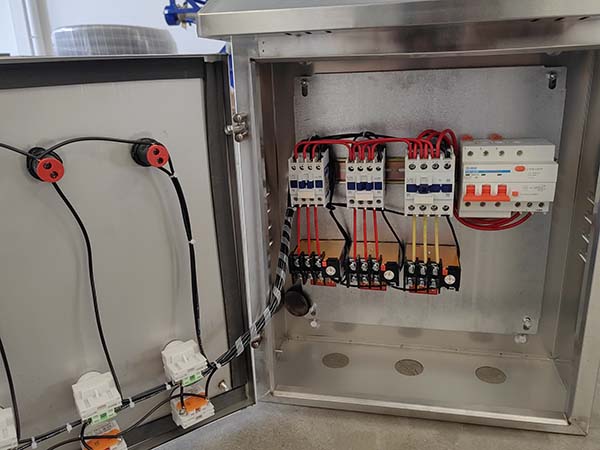
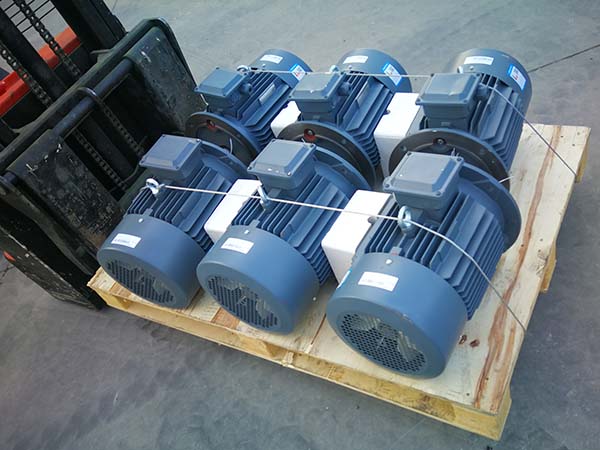
Contact us to Customized Your Dewatering Screw Press Design
In conclusion, the dewatering screw press design is essential to ensure efficient solid-liquid separation. At Tianzhong Maschinenpark, we specialize in providing high-quality dewatering screw presses that are tailored to meet your specific requirements. With our rich experience, we are committed to providing you with customized solutions that meet your specific needs, inclduing the material, color, design, etc. Contact us today to discuss your requirements and let us help you achieve efficient and reliable solid-liquid separation.

